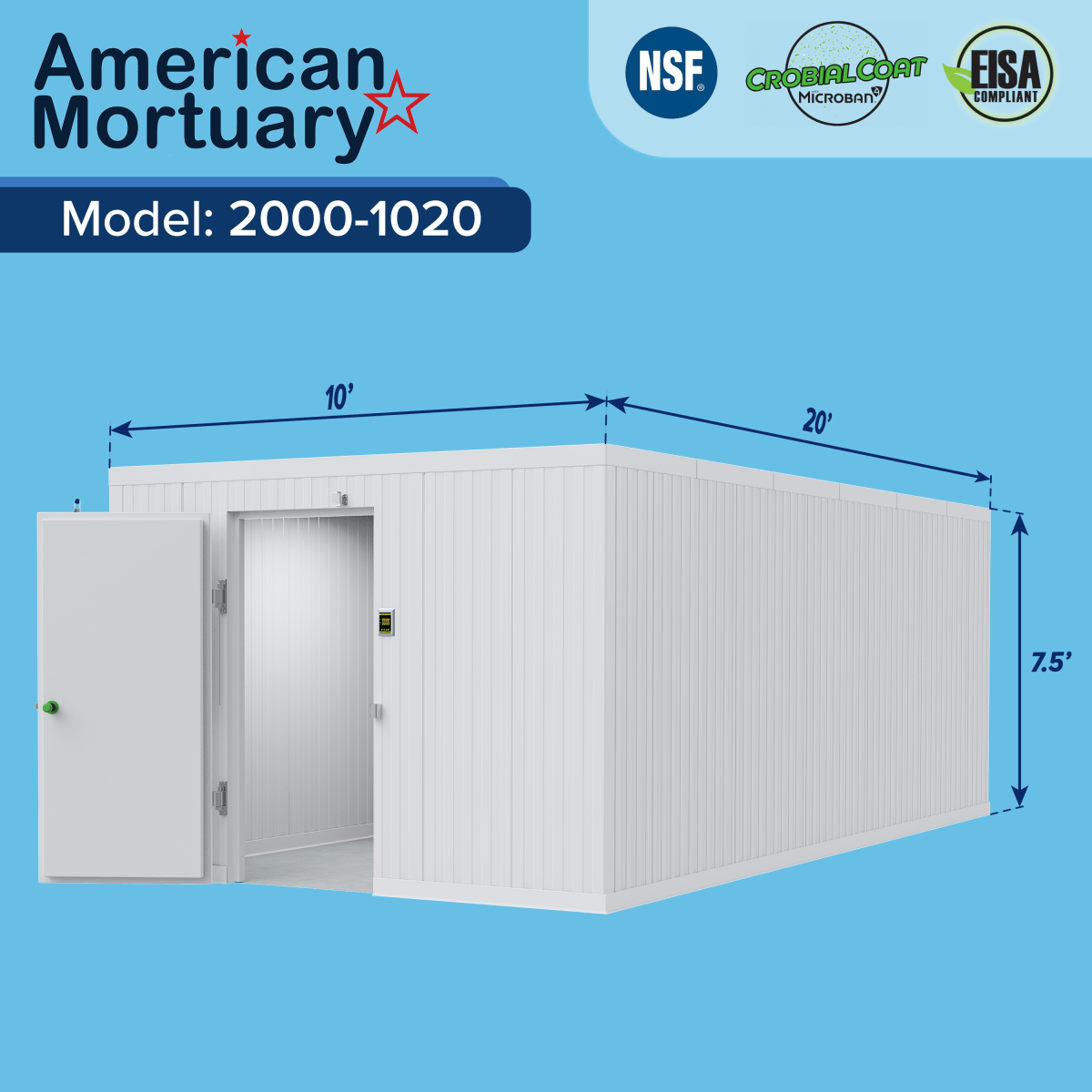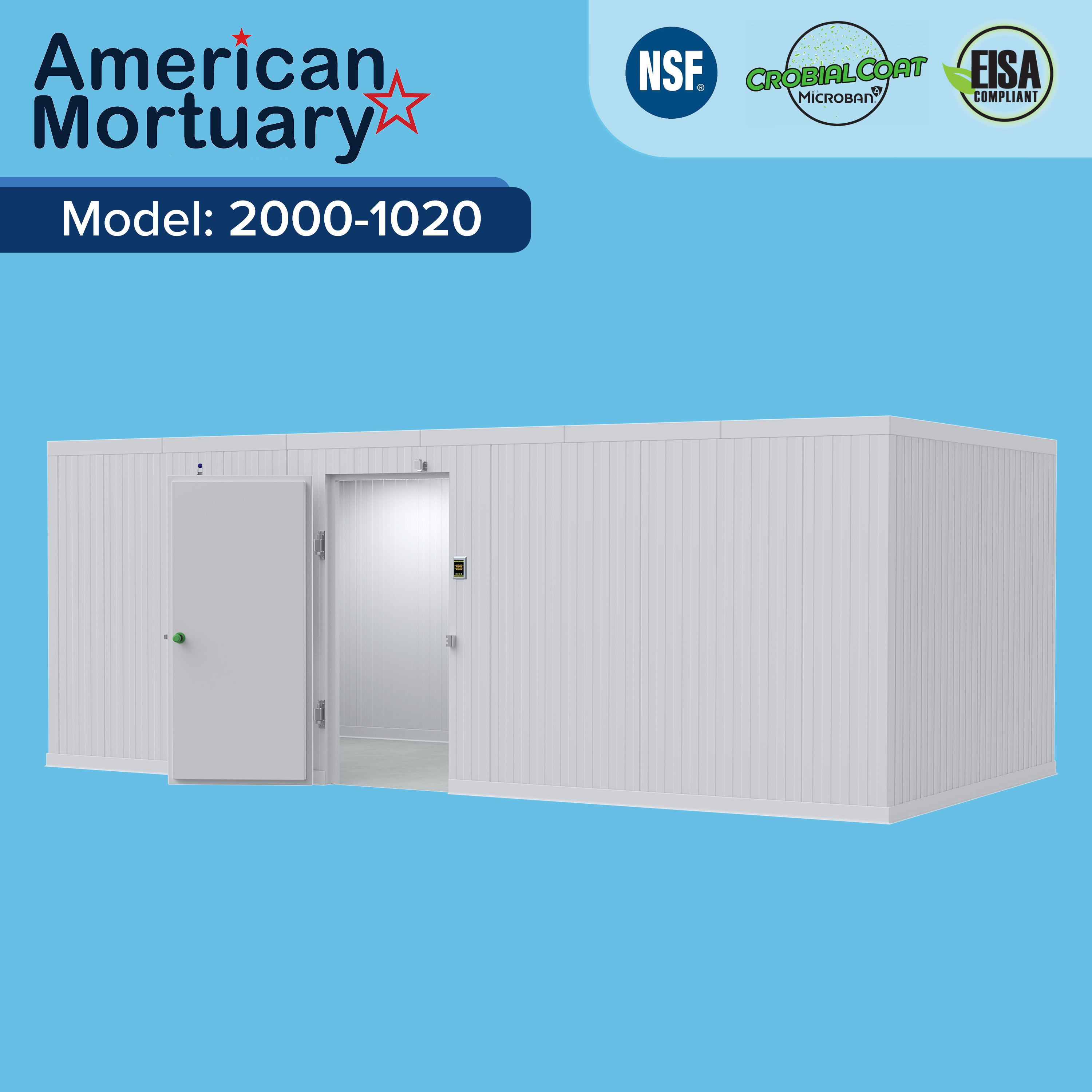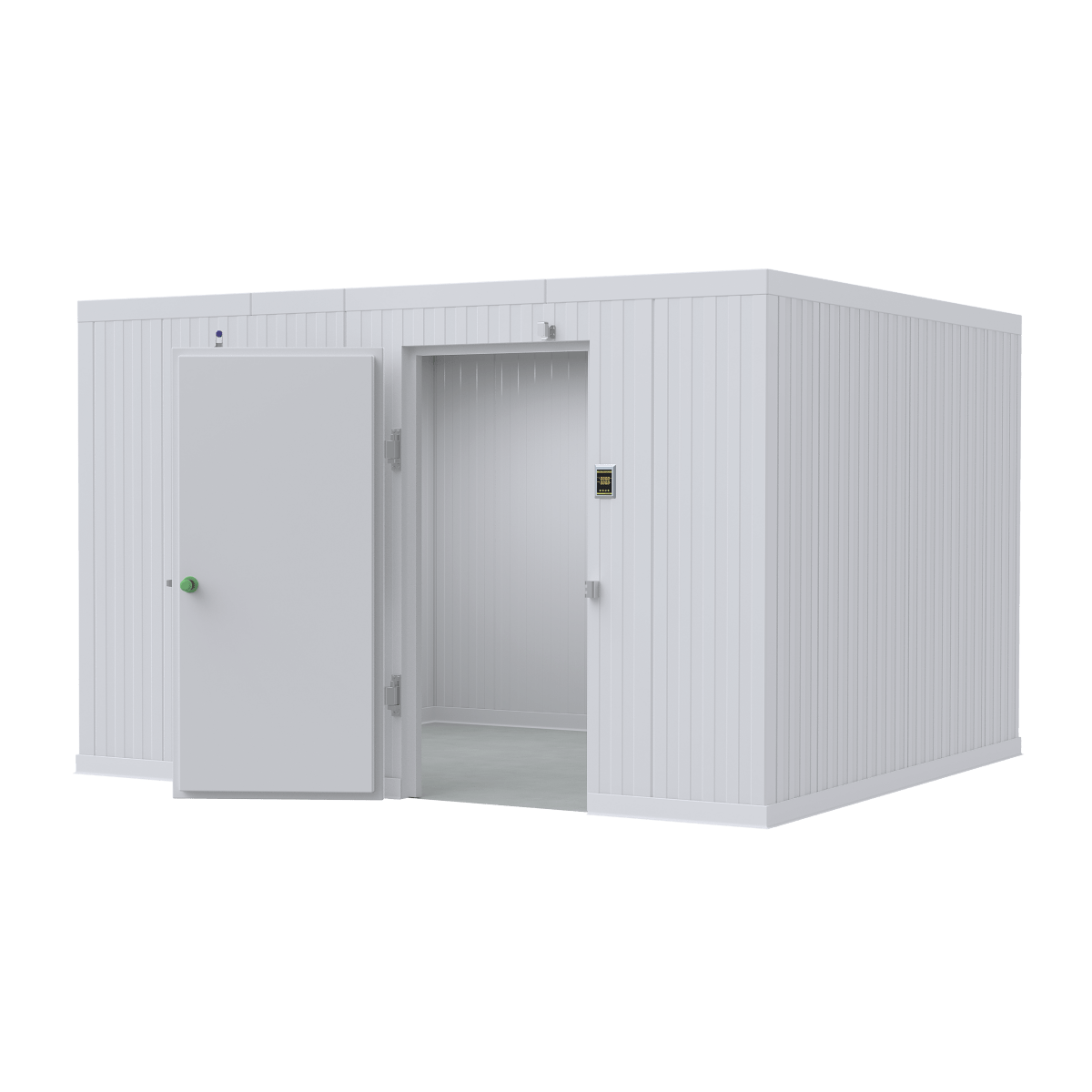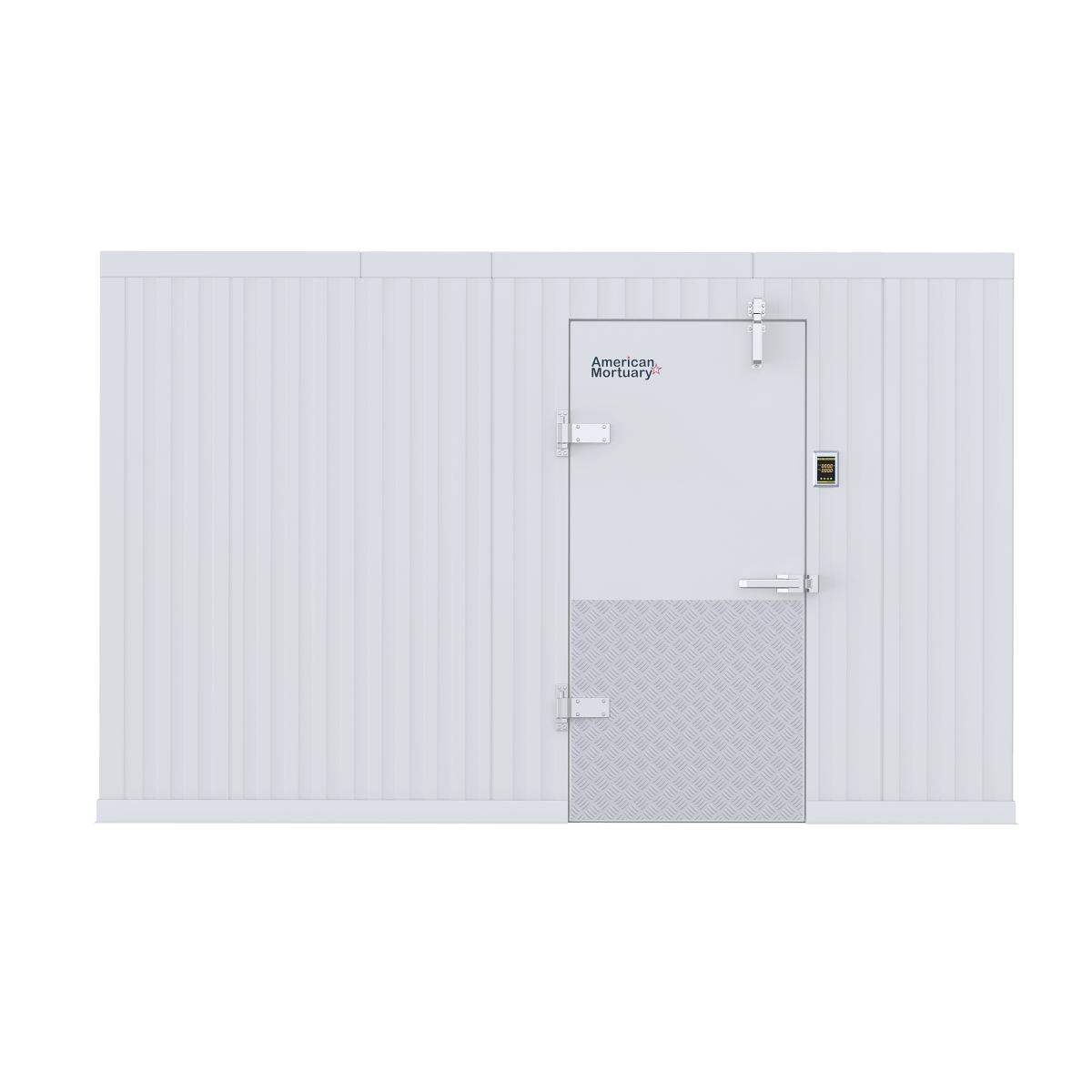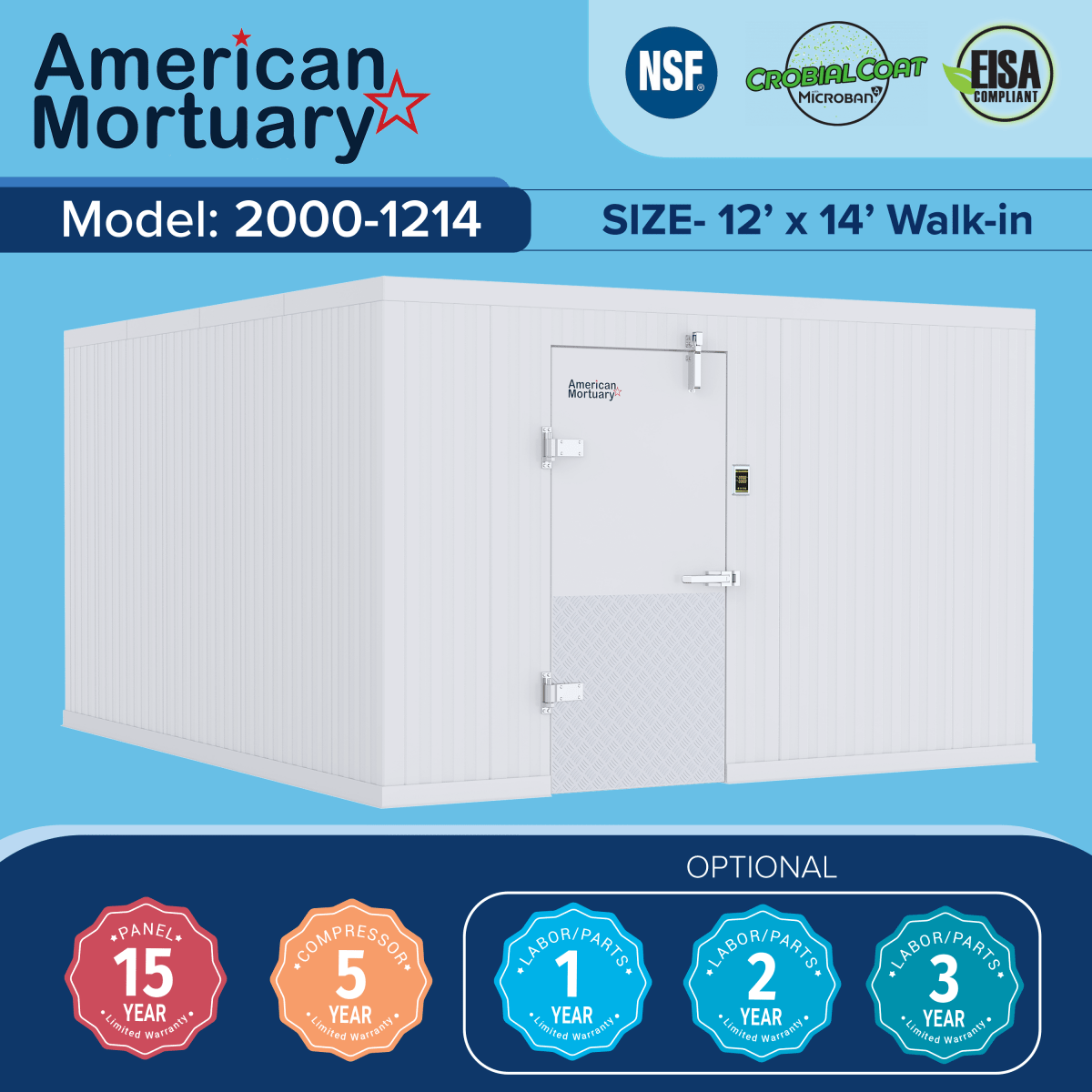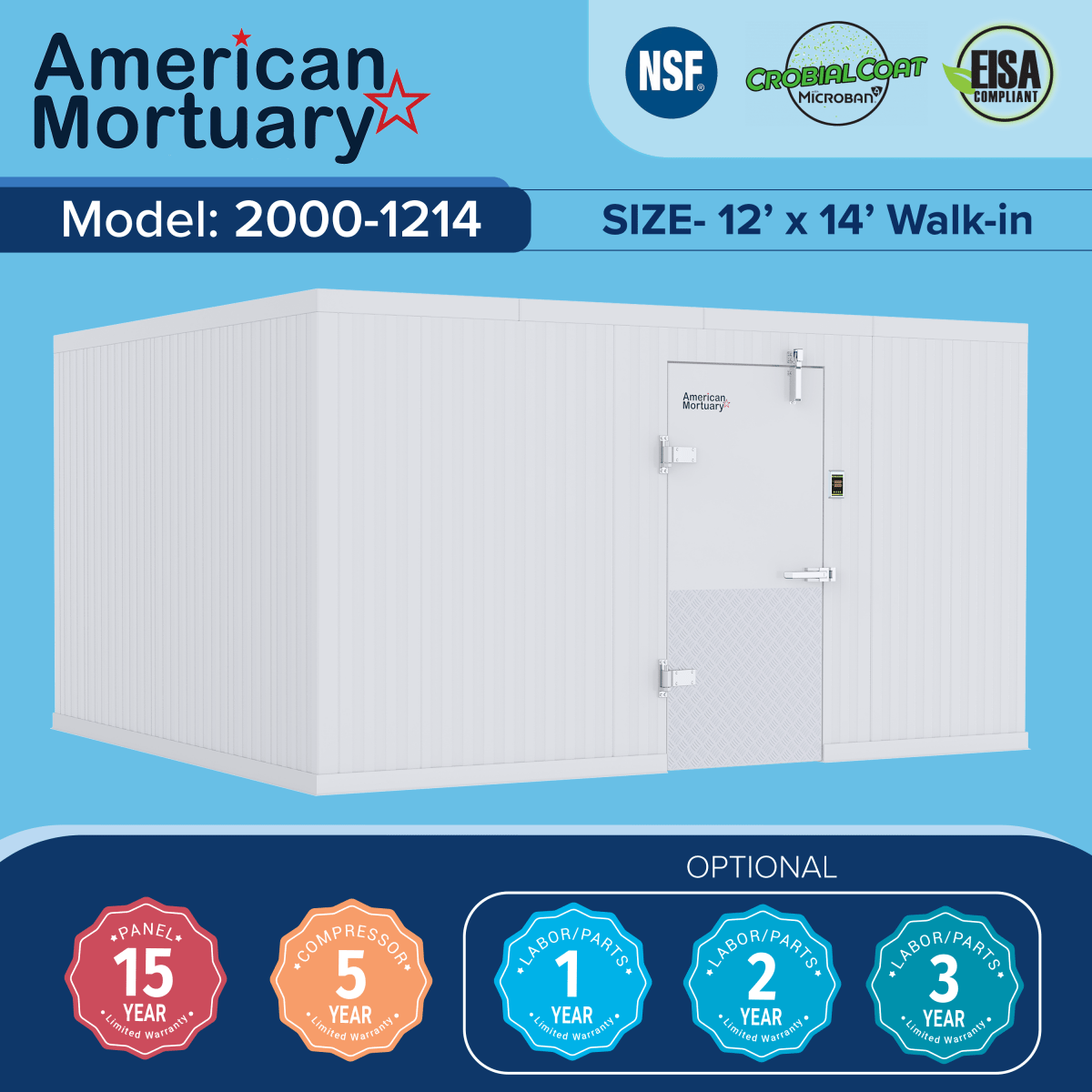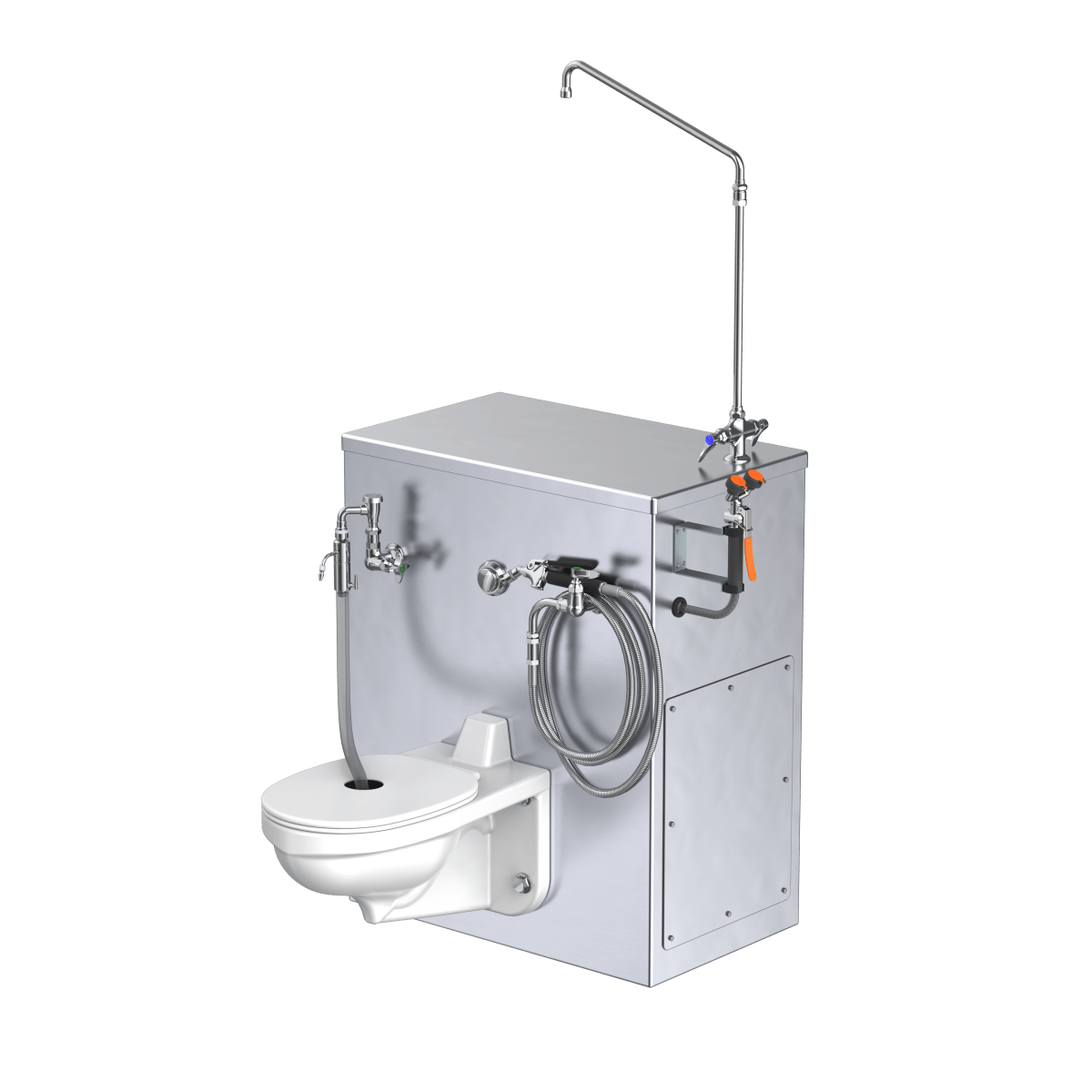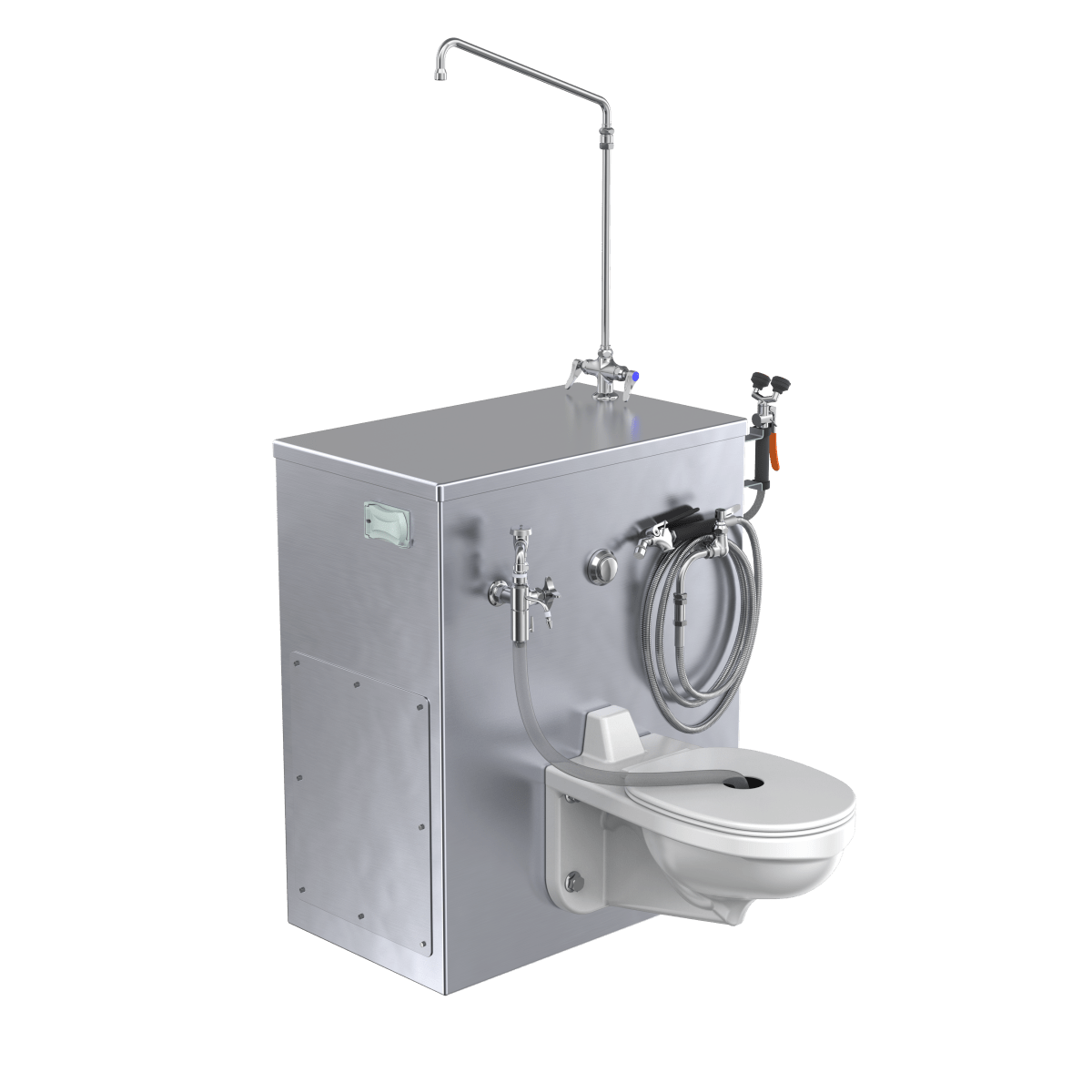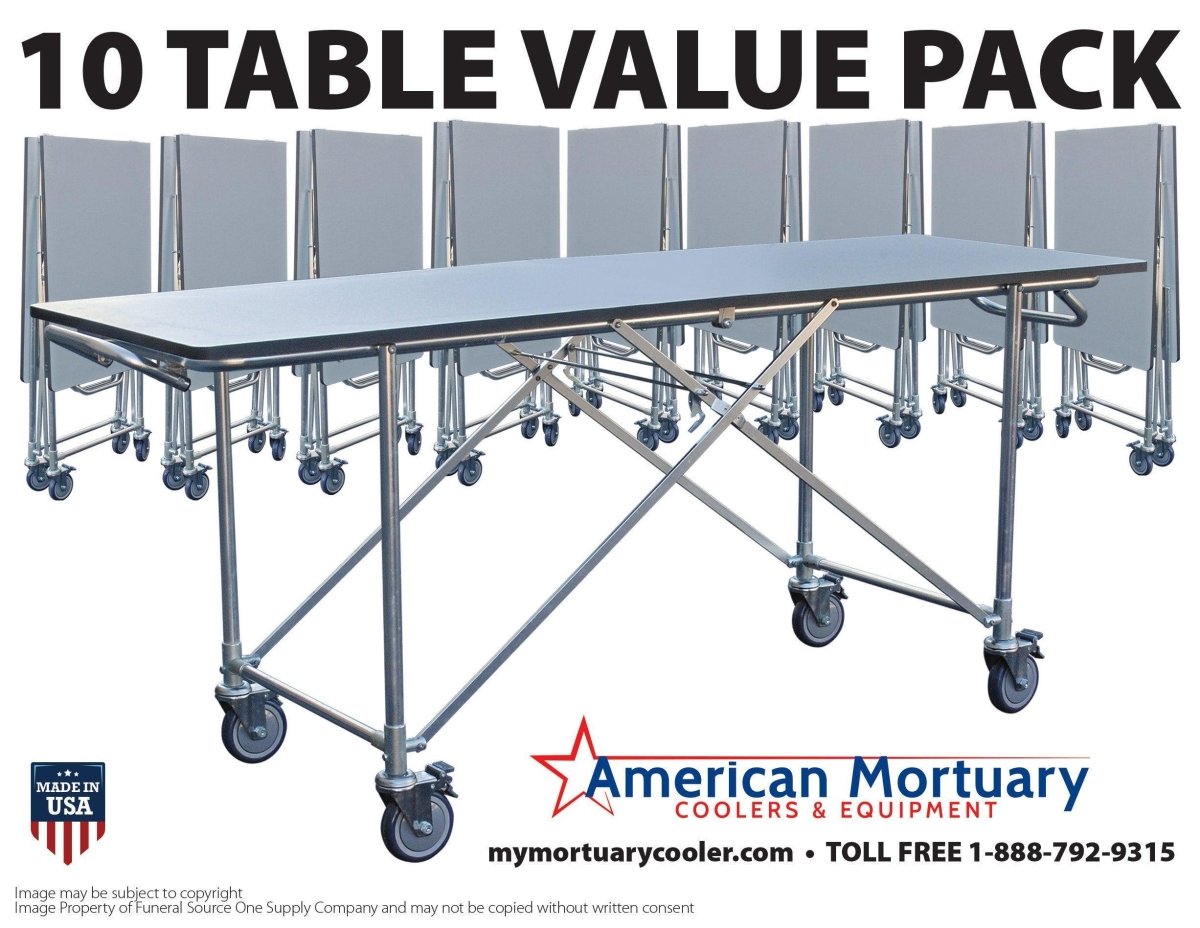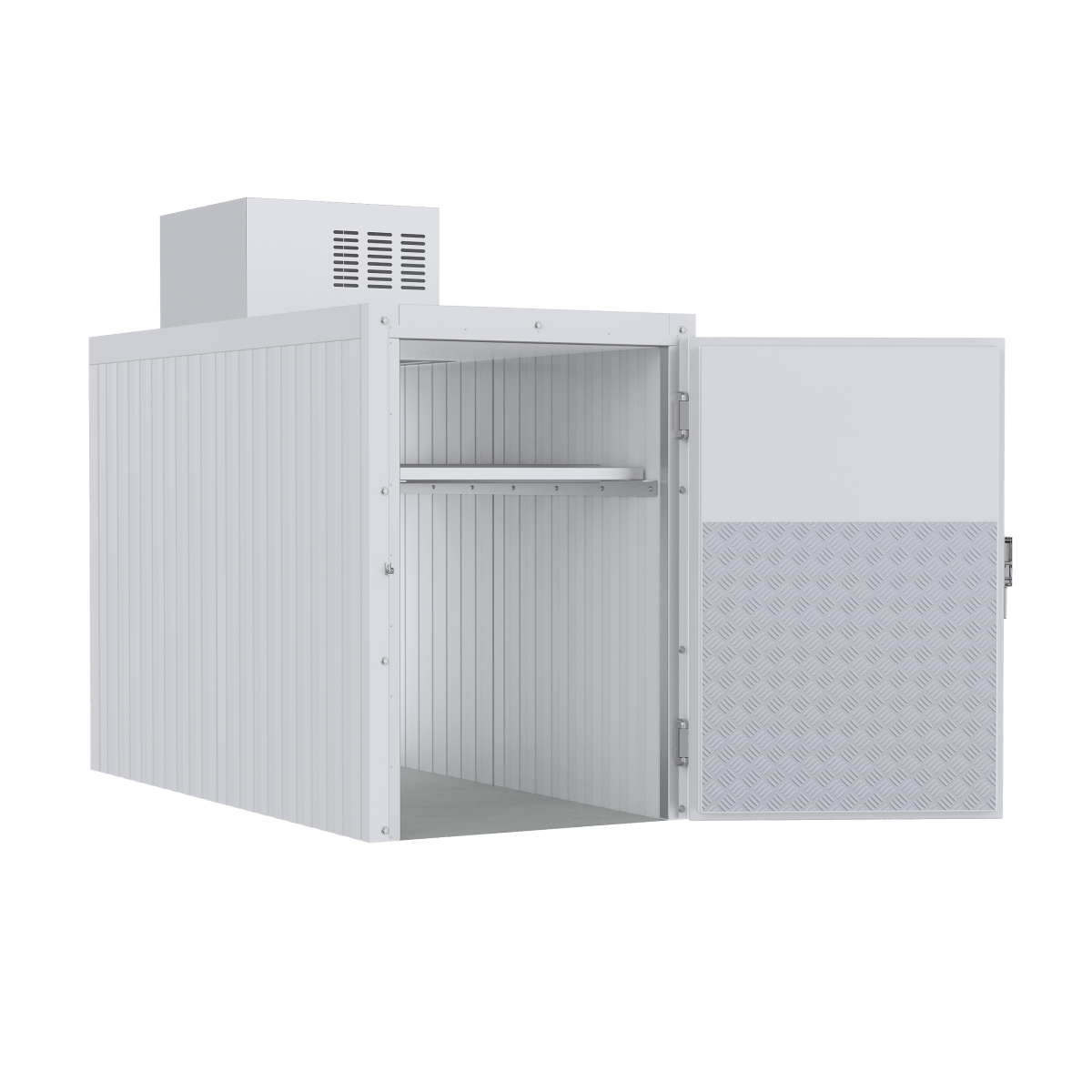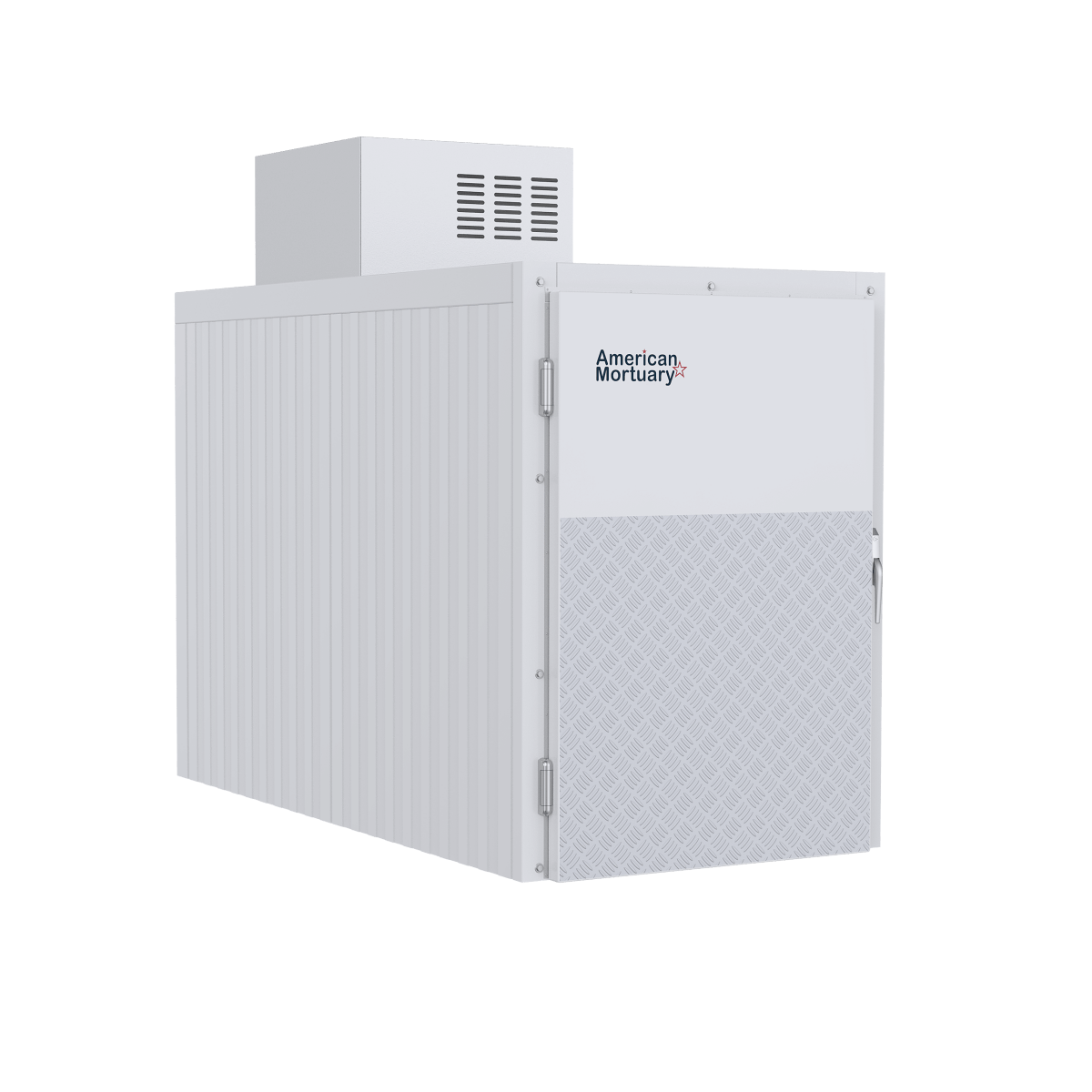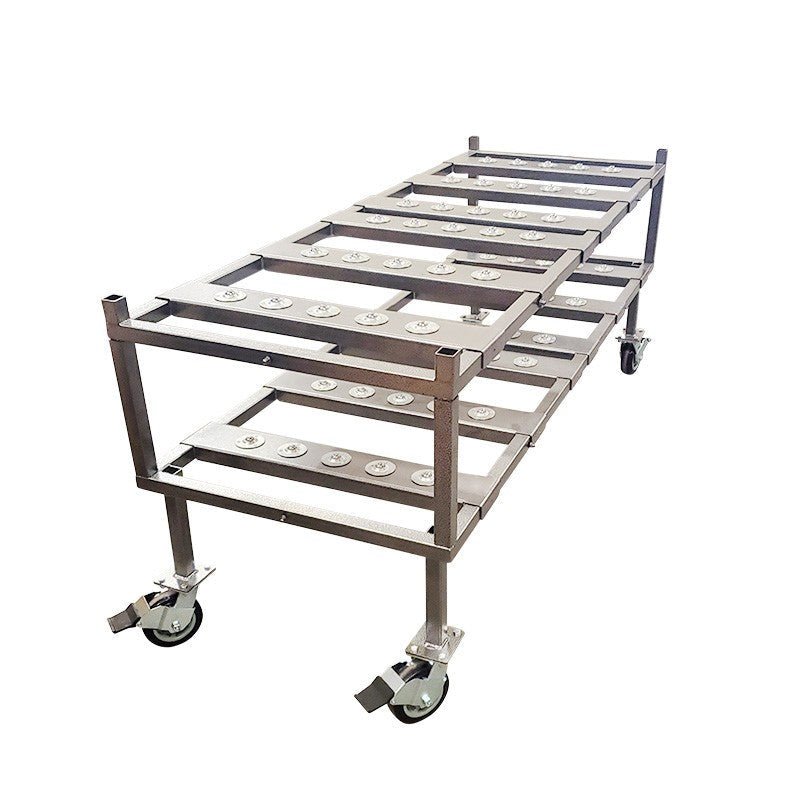Understanding the Fundamentals of Funeral Preparation
An embalming table definition is a specialized workstation designed for positioning and supporting a deceased body during the embalming process. It typically consists of a flat, non-porous surface with raised edges, drainage systems, and adjustable features to facilitate the proper preparation of remains.
| Key Elements of an Embalming Table | Description |
|---|---|
| Primary Function | Provides a stable, hygienic surface for embalming procedures |
| Common Materials | Stainless steel with porcelain or metal surfaces |
| Essential Features | Drainage systems, adjustable height, tilting mechanisms |
| Design Purpose | Facilitates efficient workflow while maintaining dignity of the deceased |
The embalming table serves as the cornerstone of the preparation room, where funeral professionals perform the essential work of preserving and preparing the deceased for viewing and final disposition. Far from the eerie portrayal in popular media, these tables represent professional craftsmanship designed with both functionality and respect in mind.
Modern embalming tables have evolved significantly from their historical counterparts. During the American Civil War, embalming gained prominence as families sought to transport deceased soldiers home, leading to innovations in both technique and equipment. Today's tables feature ergonomic designs that not only assist embalmers in their work but also maintain the dignity of those who have passed.
For funeral directors, investing in a quality embalming table isn't just about purchasing equipment—it's about committing to excellence in funeral service and demonstrating respect for both the deceased and their families.
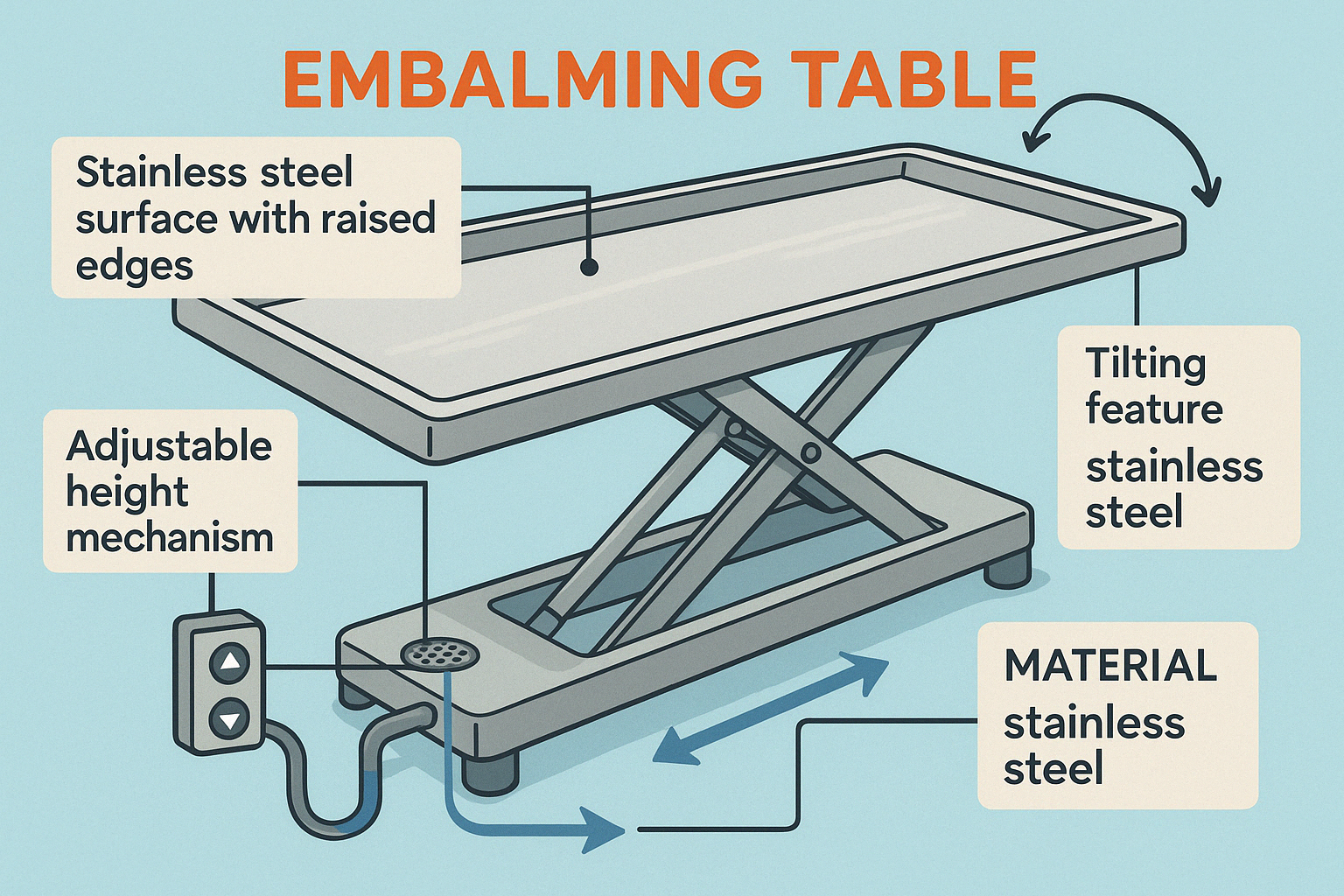
Embalming table definition terms at a glance:
Embalming Table Definition: Showing the Essential Funeral Equipment
When we talk about an embalming table definition, we're describing much more than just a piece of funeral equipment. This essential workstation is the heart of every preparation room, enabling funeral professionals to serve families with dignity and respect during their most difficult moments. Think of it as the quiet foundation that supports the meaningful work happening behind the scenes at a funeral home.
What Is an Embalming Table?
An embalming table is essentially a specialized platform designed with care and precision for a single purpose: supporting the deceased during the embalming and preparation process. Unlike ordinary tables you might find elsewhere, these are thoughtfully engineered with raised edges, non-porous surfaces, and integrated drainage systems that direct fluids away during preparation.
When you walk into a preparation room, you'll notice it resembles a surgical suite in many ways, with the embalming table standing as its centerpiece. The room features easily cleaned, nonabsorbent materials throughout, creating a clean, respectful environment for this important work.
I remember speaking with a funeral director who put it beautifully: "The embalming table is to a funeral home what an operating table is to a hospital—it's where the most technical and important work happens, requiring both precision and respect." This simple comparison captures the true essence of what these tables represent in our profession.
The Primary Function and Importance
At its core, an embalming table provides a stable, hygienic platform where the art and science of preparation takes place. This includes the gentle process of sanitization, where the body is thoroughly cleansed; preservation, where embalming fluids temporarily halt natural processes; and restoration, where features are carefully set in peaceful positions.
The embalming table definition extends beyond its physical attributes to encompass its role in upholding human dignity. Each table is designed with features that allow funeral professionals to work efficiently while maintaining the modesty and respect due to each person in their care. The raised edges, drainage systems, and adjustable components all serve both practical and respectful purposes.
As one experienced embalmer shared with me, "The body is the home of a loved one's spirit and should be treated with the utmost dignity and respect." This philosophy guides everything about how these tables are designed and used. When a family entrusts their loved one to a funeral home, they're placing immense faith in professionals to care for someone precious to them, and the embalming table is where much of that sacred trust is fulfilled.
In many ways, the embalming table represents the intersection of technical expertise and compassionate care that defines the funeral profession. It's where science meets reverence, where professional skill honors personal loss, and where the final physical care is provided to someone deeply loved.
Materials and Construction of Embalming Tables
When you step into a modern preparation room, the gleaming surface of a stainless steel embalming table instantly communicates professionalism and care. The materials used in today's embalming tables aren't just about appearance—they're carefully chosen to create equipment that serves funeral professionals faithfully for decades.
Modern embalming table construction primarily features stainless steel, which has become the gold standard in the industry for good reason. This durable metal stands up to daily use without showing wear, provides a non-porous surface that prevents fluid absorption, and resists the harsh chemicals used in the embalming process. Perhaps most importantly, stainless steel offers the stability needed to support and secure the deceased during preparation procedures.
When examining a quality embalming table, you'll notice thoughtful construction features that might not be immediately obvious. The surfaces are typically seamless to prevent fluid collection in hard-to-clean areas. The table itself often has a subtle slope directing fluids toward drainage outlets. The supporting structure is reinforced to accommodate various body weights, while adjustable components allow embalmers to work comfortably regardless of their height or the specific procedure being performed.
Traditional vs. Modern Materials
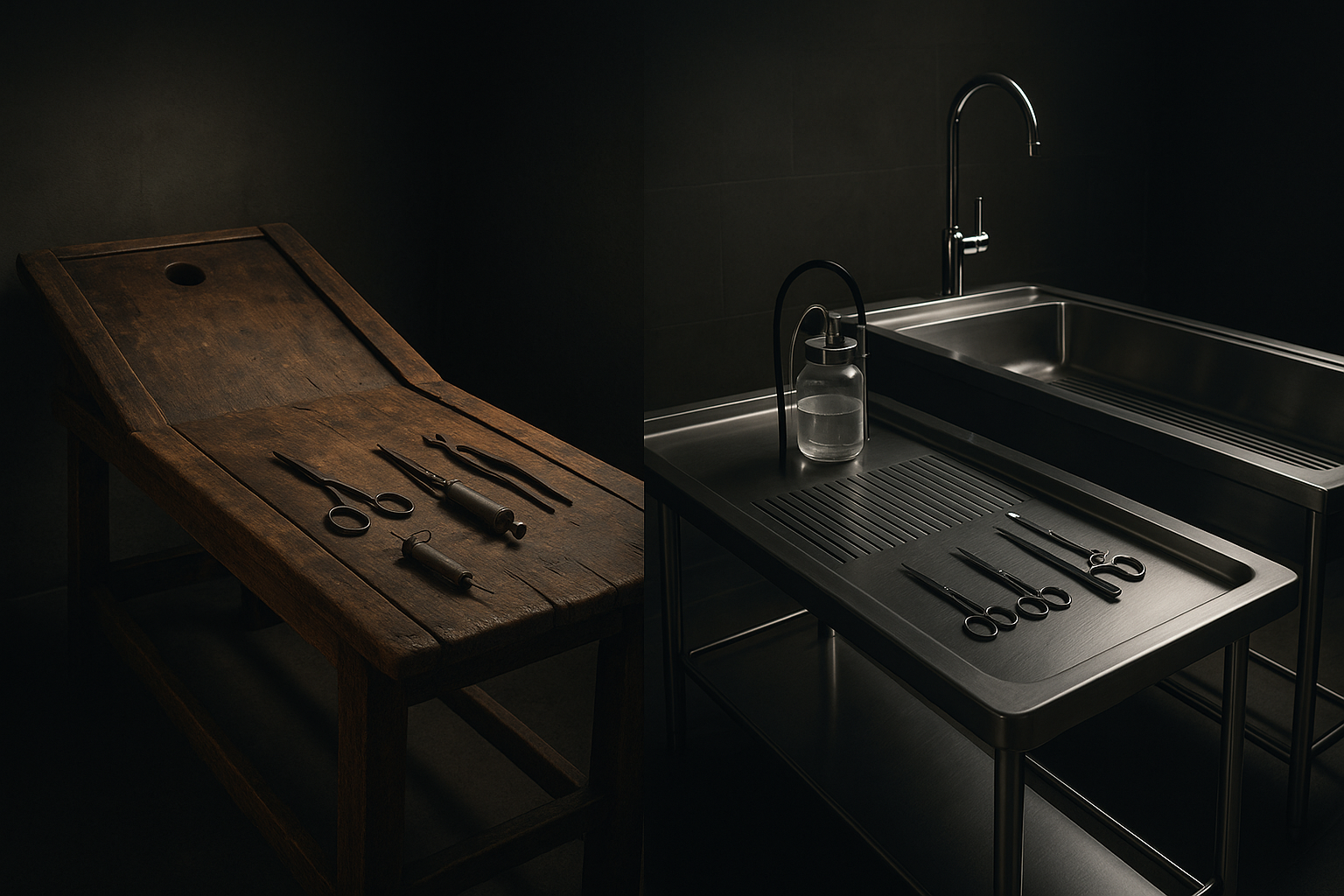
The story of embalming table materials is really the story of the funeral profession's evolution. Before the 20th century, wooden tables were the norm—they were readily available, relatively affordable, and could be crafted by local carpenters. But these wooden tables presented serious challenges for early embalmers.
"I've seen antique wooden embalming tables in museum collections," shares a funeral historian. "While beautiful in their craftsmanship, they tell a story of the difficulties faced by early practitioners. The wood absorbed fluids and chemicals, making complete sanitation nearly impossible."
The Civil War period marked a turning point for embalming in America, as the need to preserve fallen soldiers for transport home drove innovations in both techniques and equipment. By 1885, George P. Gaston's patent (US322437A) introduced adjustable components and more durable construction, signaling the profession's move toward specialized equipment.
The early 20th century brought a significant shift as metal tables with porcelain surfaces began replacing wooden ones in progressive funeral homes. These new tables offered dramatically improved hygiene and functionality—a change that reflected the growing professionalism within funeral service.
"The transition from wood to metal wasn't just about durability," notes a funeral director with over 30 years of experience. "It represented a fundamental shift toward recognizing the importance of hygiene and dignity in the preparation process."
Today's embalming table definition must include the modern materials that have become standard: stainless steel construction, porcelain or specialized metal surfaces, completely non-porous materials, and corrosion-resistant finishes. These aren't luxury features—they're essential elements that support the sacred work of preparing the deceased.
At American Mortuary Coolers, we've watched this evolution closely, incorporating these material advancements into our custom mortuary equipment. Our goal is ensuring that funeral homes from Tennessee to California have access to preparation equipment that honors both the profession's traditions and its commitment to excellence.
Key Features Defining a High-Quality Embalming Table
When funeral professionals invest in embalming equipment, they're not just buying a table—they're investing in a workstation that will serve as the foundation of their preparation room for years to come. The difference between a standard table and a truly exceptional one often comes down to thoughtful design features that improve both functionality and dignity.
Ergonomic Features for Embalmer Efficiency
The work of embalming is physically demanding, often requiring funeral professionals to stand for hours while performing detailed, precise work. This is why the best embalming tables incorporate thoughtful ergonomic features that reduce strain and improve workflow.
Adjustable height mechanisms are perhaps the most important ergonomic feature in modern tables. Whether hydraulic or electric, these systems allow embalmers to raise or lower the table to their ideal working height. As one funeral director from Nashville told us, "The adjustable height feature on my table saved my career. After twenty years in the profession, my back couldn't handle leaning over a fixed-height table anymore."
Equally important are tilt mechanisms that allow subtle angling of the table. This seemingly small feature makes a tremendous difference in fluid drainage and provides better access to different areas of the body without awkward positioning. Some of our more advanced models at American Mortuary Coolers even include rotating capabilities, eliminating the need to manually reposition the deceased during preparation.
The most thoughtfully designed tables also feature accessible controls that don't interrupt the embalming process. Foot pedals are particularly popular among our customers, allowing height and tilt adjustments without breaking concentration or compromising the sterile field. Integrated lighting solutions are another feature that experienced embalmers appreciate, especially when working on detailed restorative procedures.
Hygienic Design Ensuring a Sterile Environment
Hygiene isn't just a preference in the preparation room—it's an absolute necessity. The embalming table definition must include consideration for sanitation features that protect both the embalmer and ensure proper preservation of the deceased.
Seamless construction represents the gold standard in embalming table surfaces. Tables with welded seams rather than bolted joints prevent fluid collection in crevices where bacteria could grow. This seamless approach extends to the drainage systems as well, with properly angled channels that efficiently direct fluids away from the work area.
The materials themselves must be chemical-resistant to withstand repeated exposure to formaldehyde and other preservation chemicals. Over time, inferior surfaces can degrade, creating microscopic pitting that harbors contaminants. Premium stainless steel with proper finishing techniques prevents this degradation, ensuring years of service.
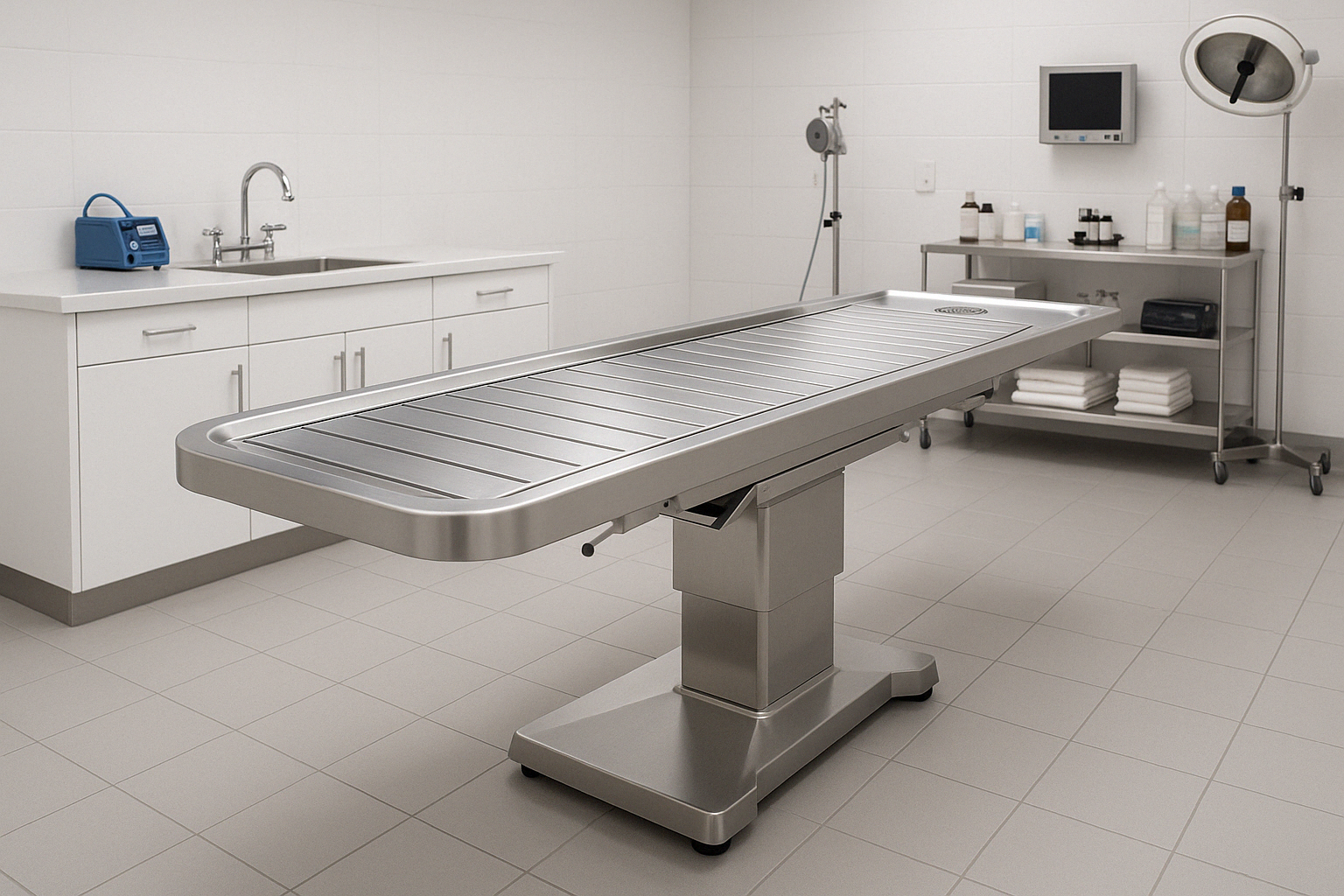
We've come a long way from the challenges faced by embalmers of previous centuries. Historical accounts from the 18th century describe embalming procedures that took seven hours under difficult conditions, with the Duchess of Ficalho noting the "state of dissolution" that made the process nearly impossible. These historical challenges highlight why modern splash guards and containment features aren't just conveniences—they're essential design elements that maintain dignity throughout the preparation process.
At American Mortuary Coolers, we understand that the tables in your preparation room aren't just equipment—they're the foundation of your professional practice. That's why we prioritize both ergonomic efficiency and hygienic design in every piece of custom mortuary equipment we create, from Tennessee to California and everywhere in between.
Modern Embalming Procedures have evolved significantly over the years, and the equipment that supports these procedures must evolve as well. The best embalming tables combine durability, stability, ergonomic design, adjustability, and superior drainage systems to create a workspace that honors both the embalmer's craft and the dignity of those in their care.
How Embalming Table Design Contributes to the Embalming Process
When you step into a modern preparation room, the embalming table stands as the centerpiece of this sacred space. Far more than just a flat surface, today's embalming tables are marvels of thoughtful design that directly impact every aspect of the embalming process.
Think about it this way: a well-designed table doesn't just support the deceased—it actively helps funeral professionals perform their duties with precision and care. The thoughtful positioning features, like adjustable head rests and body supports, ensure the deceased is placed perfectly for arterial injection and drainage. This proper positioning isn't just about convenience; it's essential for achieving natural-looking results that bring comfort to grieving families.
The drainage systems built into quality tables manage fluids efficiently, directing them away from the work area. This seemingly simple feature makes an enormous difference in the embalming process, allowing professionals to work cleanly and efficiently while maintaining a dignified environment.
Access is another crucial consideration. A well-designed table allows embalmers to easily reach important injection sites without awkward positioning or unnecessary movement of the deceased. The overall layout supports a natural workflow, guiding the embalmer through each step of the process in a logical sequence.
Perhaps most importantly, quality embalming tables are designed with dignity as a priority. They include features that ensure the body remains properly covered and positioned throughout the preparation process, honoring the deceased even in these most private moments.
The Evolution of Embalming Table Design Over Time
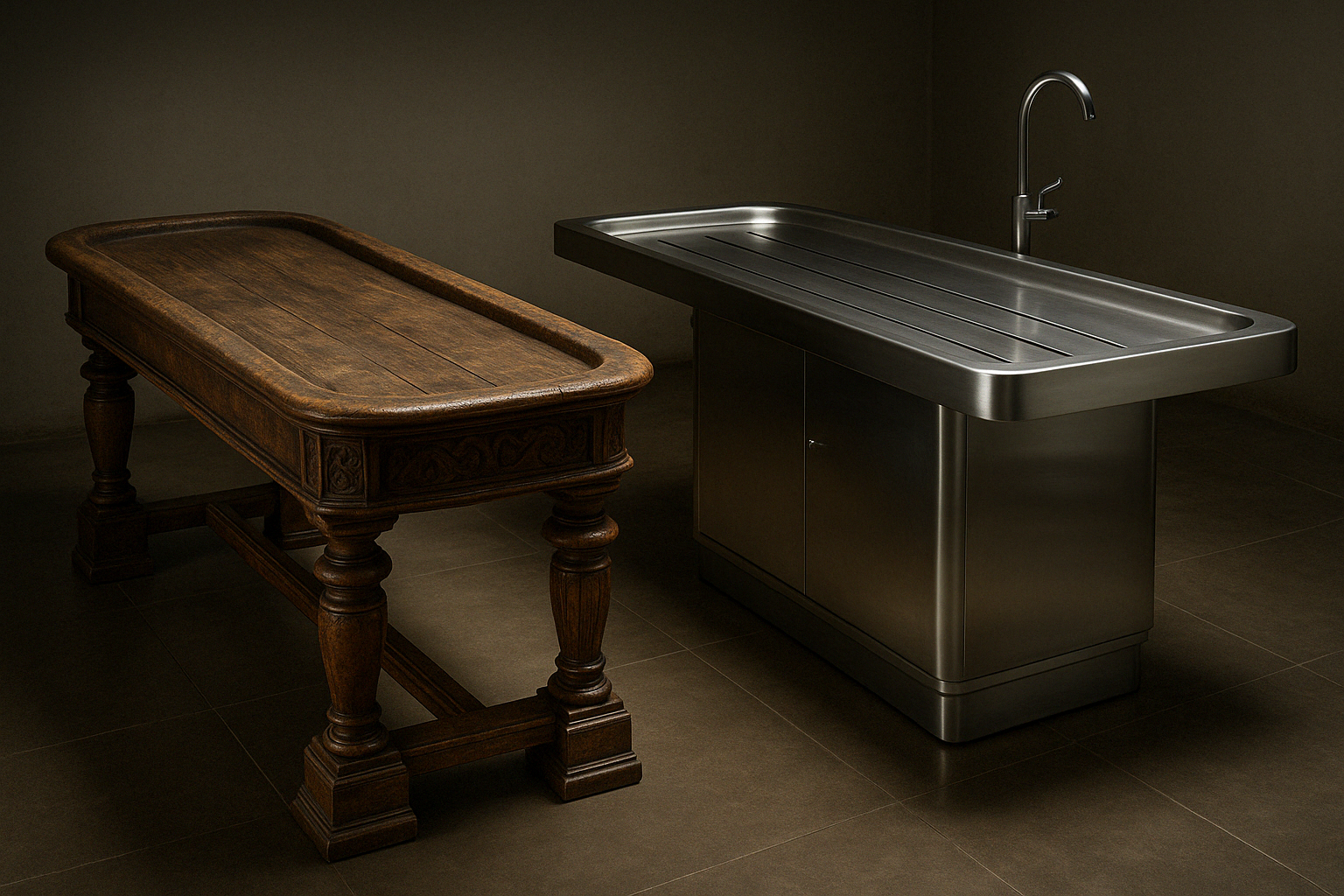
The story of embalming tables is, in many ways, the story of funeral service itself. Their evolution reflects not just technological progress but our changing relationship with death and remembrance.
During the Civil War, when embalming first gained widespread attention in America, the tables were startlingly simple—often just wooden platforms with minimal features. Dr. Thomas Holmes, now remembered as the "father of modern embalming," worked with these basic tools as he pioneered techniques that would transform funeral service.
By 1885, we see the first real innovation breakthrough with George P. Gaston's patent for an adjustable embalming table. His invention featured folding legs with gimbal joints, adjustable tabletops, and interchangeable head-rests— features for the time. In his own words from the patent application: "I am aware that in the construction of my device some parts of it in themselves are not new, but I believe that I have so combined and arranged the several parts of my improved table that I am enabled to accomplish results not heretofore attained."
The mid-20th century brought significant advancements with the transition to metal construction and porcelain surfaces. These materials dramatically improved sanitation and durability, addressing growing concerns about hygiene in funeral service. Basic height adjustment mechanisms began appearing, showing a growing awareness of the embalmer's physical needs.
Today's tables represent more than 150 years of thoughtful evolution. Modern embalming tables feature hydraulic or electric height adjustment systems that reduce back strain for embalmers. Specialized tilting mechanisms improve drainage and access. Advanced fluid management systems make the process cleaner and more efficient than ever before. Every aspect of these tables has been refined with both the embalmer and the deceased in mind.
"The embalming table is a crucial component in the preparation of the deceased, providing a stable and hygienic platform for embalmers to perform their duties with precision and reverence."
Embalming Table Definition in Today's Funeral Services
The modern embalming table definition has expanded far beyond its original meaning. Today, when funeral professionals talk about an embalming table, they're referring to a sophisticated preparation station that balances technical requirements with deep ethical considerations.
In contemporary funeral service, an embalming table is defined as a specialized preparation station built from non-porous, chemical-resistant materials. It features integrated drainage systems, adjustable components, and thoughtful ergonomic elements that enable dignified and efficient preparation while maintaining the highest standards of hygiene and professional practice.
This expanded definition acknowledges that today's tables aren't simply surfaces for supporting a body—they're comprehensive systems designed to meet the complex demands of modern funeral service while honoring the dignity of those who have passed.
At American Mortuary Coolers, we've had the privilege of seeing how embalming tables have evolved through our work with funeral homes across the country, from Tennessee to New York. We understand that these aren't just pieces of equipment—they're essential tools that enable funeral professionals to serve families with excellence during their most difficult moments.
Antique Embalming Tables: A Collector's Buying Guide
The Role of Embalming Tables in Ensuring Dignity and Respect
When we talk about embalming tables, it's easy to focus solely on their technical aspects. But these tables serve a deeper purpose that speaks to the heart of funeral service – preserving the dignity of those who have passed on. At American Mortuary Coolers, we believe this aspect of embalming tables deserves special attention.
Preserving the Dignity of the Deceased
The journey of saying goodbye to a loved one involves many private moments that families never see. Behind the scenes, in the preparation room, funeral professionals work diligently to ensure each person is treated with the same respect in death as they deserved in life.
Privacy is paramount in this sacred space. The embalming table stands at the center of a carefully designed room where the deceased can be prepared away from public view, maintaining their dignity during this vulnerable transition.
The design of quality embalming tables allows for respectful positioning that supports the body naturally. This isn't just about practicality – it's about honoring the person who once inhabited that body. As one funeral director beautifully expressed, "the body is the home of a loved one's spirit and should be treated with the utmost dignity and respect."
Modern embalming table design includes features that allow professionals to work on specific areas while keeping the rest of the body appropriately covered. This thoughtful approach minimizes exposure and preserves the modesty of the deceased throughout the preparation process.
Many funeral homes across America serve diverse communities with varying cultural traditions. Today's embalming tables often include adaptable features that accommodate different cultural and religious requirements for handling the deceased – from specific positioning needs to space for ceremonial washing.
Though families rarely enter the preparation room, knowing their loved one received respectful care throughout brings immeasurable comfort. One funeral director from Tennessee shared, "When I tell families about our standards for dignified care, I can see relief wash over their faces. They may never see our preparation room, but they need to know their loved one was in good hands every step of the way."
Supporting Funeral Professionals in Their Duties
The relationship between funeral professionals and the equipment they use is deeply personal. A well-designed embalming table becomes an extension of their commitment to providing compassionate, respectful care.
Ergonomic features in quality tables reduce physical strain, allowing embalmers to focus their full attention on the person in their care rather than their own discomfort. After hours of standing during preparation, these thoughtful design elements make a world of difference.
The stable, well-designed surfaces of professional embalming tables improve precision in restorative work. This is especially important when helping families who wish to see their loved one one last time – detailed cosmetic application and restoration require a proper foundation.
A funeral director from the Southwest region told us, "When I'm working at a quality table, I can give my complete attention to the details that matter most to families. The right equipment doesn't just make my job easier – it helps me serve families better."
The efficiency that comes from thoughtful table design allows funeral professionals to spend less time wrestling with equipment and more time on the detail-oriented aspects of care that truly matter. In the end, this translates to better service for grieving families.
When families tour a funeral home, they may never see the preparation room, but the overall impression of professionalism matters deeply. A well-equipped facility with high-quality embalming tables reflects a funeral home's commitment to excellence and reinforces professional standards that families can trust.
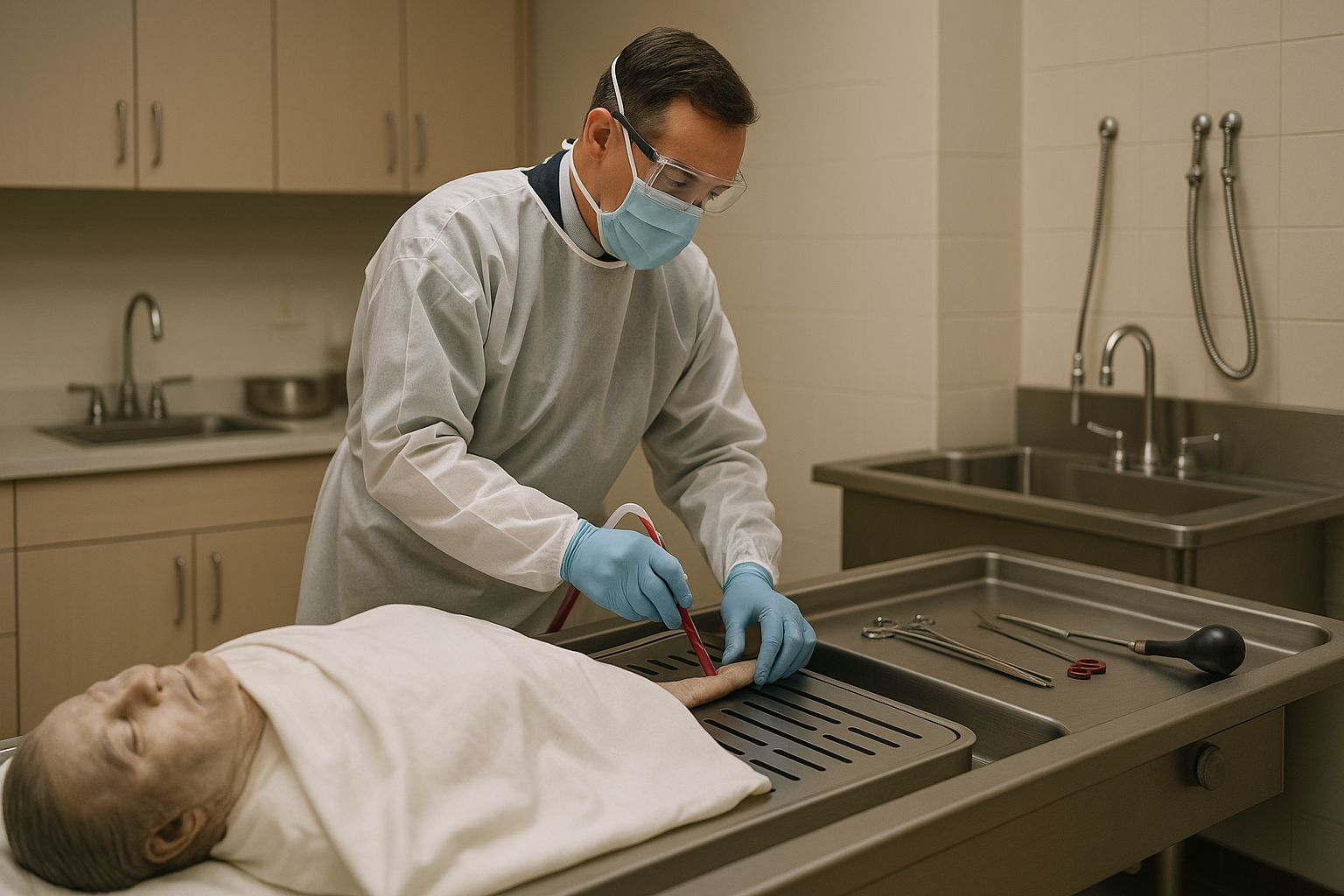
At American Mortuary Coolers, we've seen how the right equipment supports funeral professionals across different regions – from Tennessee to California – in upholding the dignity of the deceased while honoring local funeral traditions. The embalming table definition extends far beyond a piece of equipment; it represents a sacred space where the final physical care of a loved one takes place with reverence and respect.
Customization Options to Meet Diverse Needs
When it comes to embalming tables, one size definitely doesn't fit all. The funeral industry serves communities with rich diversity in traditions, practices, and needs—and modern embalming tables reflect this reality through thoughtful customization options.
Funeral homes across the country have unique requirements based on their specific clientele, regional practices, and physical spaces. An embalming table that works perfectly for a funeral home in Tennessee might need adjustments for one in California. That's why the embalming table definition has expanded to include adaptability as a core feature.
"Having equipment that adapts to our specific needs rather than forcing us to adapt our practices to standard equipment has transformed how we serve our families," explains one funeral director who recently upgraded their preparation room.
Customization begins with basic considerations like size variations. From pediatric models designed with smaller dimensions to reinforced tables that safely support larger individuals, these options ensure that every person can be cared for with dignity. Special drainage configurations address both practical concerns—like local water regulations—and preferences for specific embalming techniques.
Material choices balance durability, ease of cleaning, and budget considerations, while accessory compatibility allows for the addition of specialized tools, lighting systems, or supplementary work surfaces. Some funeral homes prefer fixed installations, while others benefit from mobility features with locking casters that allow the table to be repositioned as needed.
What's particularly important for funeral homes is finding equipment that respects regional traditions. A funeral home in the Southwest might have different requirements than one in the Northeast, which is why American Mortuary Coolers designs custom solutions for clients from Chicago to Los Angeles.
Technological Advances and Custom Solutions
The world of embalming tables has been revolutionized by modern technology, creating possibilities that funeral professionals of previous generations could only imagine.
Modern hydraulic systems have transformed the physical experience of embalming. These sophisticated mechanisms allow embalmers to smoothly adjust both height and angle with minimal effort, dramatically reducing the physical strain that once came with the profession. A table can be precisely positioned at the perfect working height for each embalmer, then easily adjusted as needed throughout the preparation process.
Some advanced tables now incorporate digital controls that allow for programmable positions and even data tracking capabilities. This technology helps funeral homes maintain consistent standards across different staff members and shifts.
Material science has contributed significantly to table improvements as well. New composites and metal alloys offer superior durability and resistance to the harsh chemicals used in embalming, while remaining easy to thoroughly clean and sanitize. These materials maintain their integrity through years of daily use, representing a worthwhile investment for forward-thinking funeral homes.
The concept of modular design has also made its way into the preparation room. Rather than investing in completely new equipment as needs change, funeral homes can now choose systems that allow for reconfiguration or expansion. This flexibility is particularly valuable for growing businesses or those looking to accommodate evolving preparation techniques.
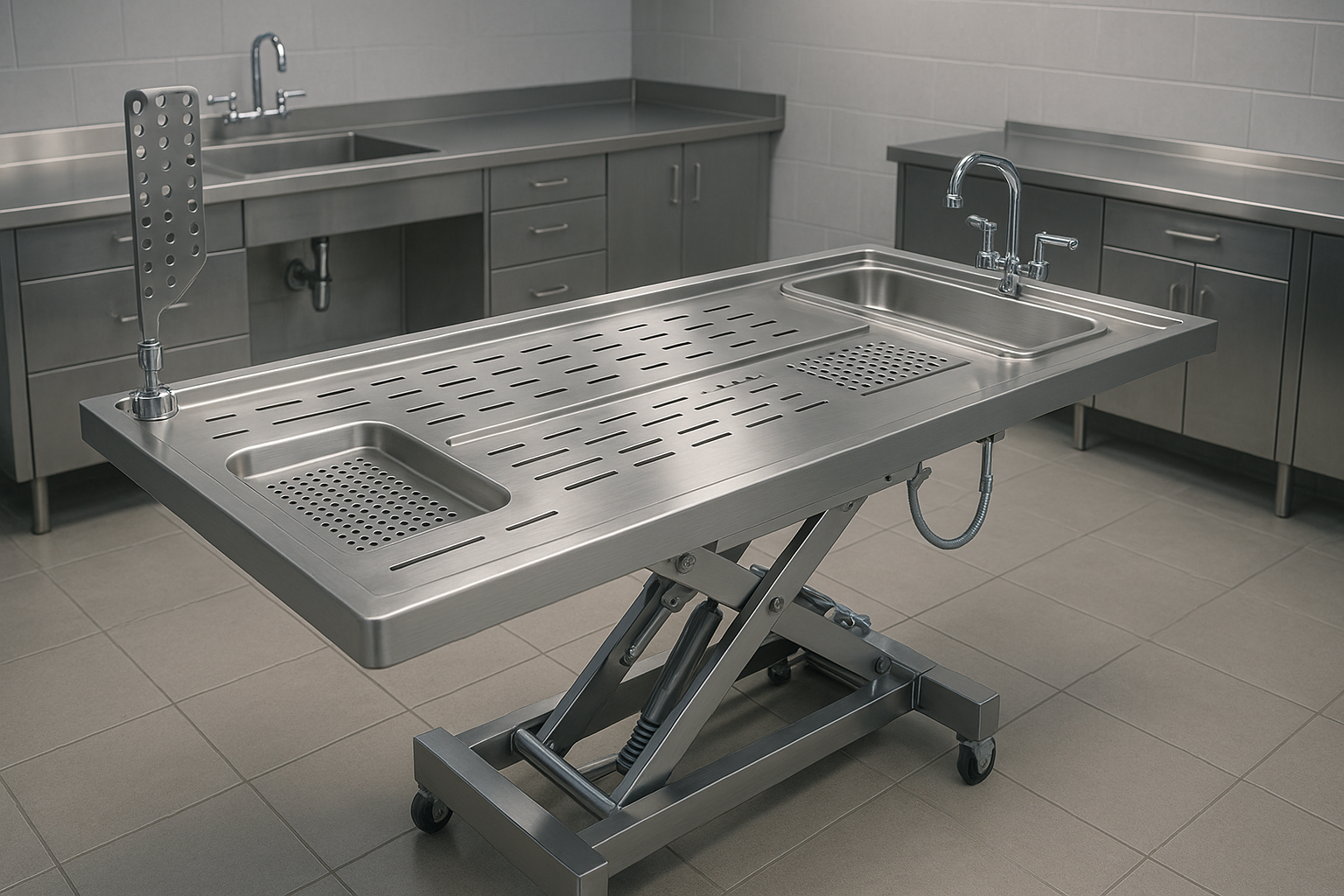
At American Mortuary Coolers, we've acceptd these technological advances in our custom mortuary equipment offerings. Our team works directly with funeral homes across our service regions to design solutions that precisely match their specific needs, whether they're in Tennessee, Georgia, or any of our other service areas.
This commitment to customization goes beyond convenience—it allows funeral professionals to honor diverse cultural traditions and provide truly personalized care. When an embalming table is thoughtfully designed for a funeral home's specific needs, it becomes more than just equipment. It becomes a partner in providing dignified, respectful care that honors both the deceased and their cultural traditions.
Lift Your Practice: Best Hydraulic Embalming Tables offers more information about how hydraulic systems can transform preparation room efficiency.
Frequently Asked Questions About Embalming Tables
What Materials Are Typically Used in the Construction of an Embalming Table?
When funeral directors invest in an embalming table, the materials matter tremendously. Modern tables have come a long way from their wooden predecessors, with stainless steel now reigning supreme in preparation rooms across America.
There's good reason for this preference. Stainless steel offers remarkable durability that stands up to daily use, resists the harsh chemicals used in embalming, and maintains its integrity year after year. The surface of these tables typically features one of three materials:
Stainless steel surfaces provide excellent durability and resist the corrosive effects of embalming chemicals, making them a practical long-term investment for busy funeral homes.
Porcelain-coated steel creates a smooth, non-porous finish that's particularly easy to sanitize between uses—a critical consideration in maintaining proper hygiene standards.
High-density polyethylene appears in some specialty models, offering a lighter-weight alternative while still providing the chemical resistance necessary for embalming work.
I've spoken with funeral directors who recall the challenges of working with older wooden tables—the staining, the difficulty in cleaning, the eventual warping. Today's tables feature seamless welding to prevent fluid collection in crevices, corrosion-resistant finishes that maintain their appearance, and either non-skid feet or locking casters to ensure stability during delicate procedures.
As one manufacturer's technical documentation notes, quality tables should withstand repeated exposure to formaldehyde solutions (5-35%), glutaraldehyde, methanol (9-56%), and the various other chemicals that are part of modern embalming practice. This durability isn't just about longevity—it's about creating a reliable workspace where professionals can focus on their craft rather than worrying about equipment failures.
How Does the Design of an Embalming Table Contribute to the Embalming Process?
The thoughtful design of an embalming table makes a world of difference in both the process and outcome of embalming work. Far from being simply a flat surface, today's tables incorporate numerous features that support the embalmer's art.
Drainage systems represent perhaps the most essential design element. Well-engineered channels and ports efficiently remove fluids during the embalming process, maintaining a clean working environment while ensuring proper fluid exchange. This isn't just about convenience—proper drainage directly affects how well embalming fluid distributes throughout the body.
The ability to adjust the table's height hydraulically or electrically transforms the embalmer's experience. Rather than bending uncomfortably for hours, professionals can position the table at the perfect working height, reducing fatigue during long procedures and allowing for more precise work. As one embalmer told me, "When you're doing detailed restoration work, the last thing you need is back pain distracting you from giving someone's loved one your best effort."
Tilt mechanisms might seem like a small feature, but they make a significant difference in the quality of embalming. The ability to slightly angle the table helps with arterial injection and drainage, improving how evenly embalming fluids distribute throughout the body. This can make the difference between natural-looking results and uneven preservation.
The table's ergonomic features extend beyond height adjustment. Contoured edges, strategically placed controls, and thoughtful design elements reduce physical strain, allowing embalmers to focus on their technical work rather than physical discomfort.
Many modern tables also feature accessory integration points where specialized tools can be attached, keeping everything organized and within reach during the embalming process. This organization contributes to a more efficient workflow and reduces the risk of accidents or contamination.
"A well-designed table isn't just about comfort," one experienced embalmer explained to me. "It directly affects how evenly embalming fluid is distributed, how effectively drainage occurs, and ultimately how natural the deceased appears. The families may never see our preparation room, but they certainly see the results of having proper equipment."
What Role Does an Embalming Table Play in Ensuring the Dignity and Respect of the Deceased?
At the heart of funeral service lies a sacred trust: treating each person with dignity, even after death. The embalming table definition extends beyond its technical aspects to include this fundamental ethical dimension, serving as the platform where respectful care is provided.
Proper positioning is essential to maintaining dignity. Quality tables support the body in a natural, peaceful position throughout the preparation process. This isn't merely aesthetic—it reflects the fundamental respect due to every individual in our care. The design of good tables allows for gentle, secure positioning that preserves dignity even during technical procedures.
The preparation room itself, centered around the embalming table, creates a private, secure space where the deceased can be prepared away from public view. This privacy honors the vulnerability of the deceased and upholds the trust families place in funeral professionals.
Thoughtfully designed tables allow embalmers to work on specific areas while keeping the rest of the body appropriately covered, maintaining modesty throughout the preparation process. This careful attention to coverage demonstrates respect even when no family members are present to witness it—a testament to the integrity of funeral service professionals.
The smooth surfaces and appropriate support of modern tables reduce the need for excessive handling of the deceased, allowing for gentle, dignified care throughout the preparation process. This mindful handling honors the person who has died and provides peace of mind to grieving families.
Many contemporary designs include features that can be adapted to accommodate various cultural and religious requirements for handling the deceased. This flexibility allows funeral homes to serve diverse communities with equal respect and attention to specific needs.
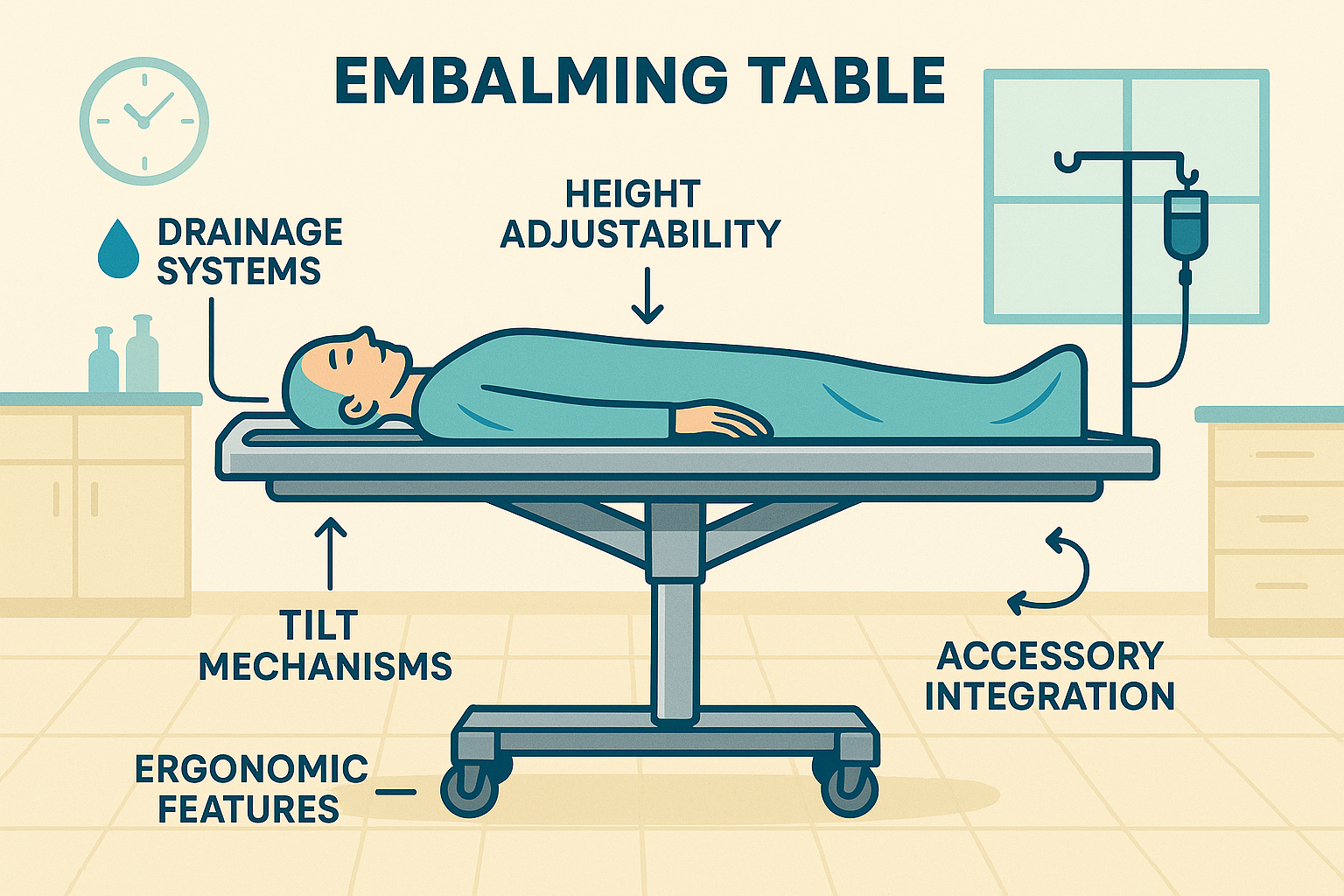
As one funeral director beautifully expressed, "The body is the home of a loved one's spirit and should be treated with the utmost dignity and respect." The embalming table is where this principle comes to life, providing a space where respectful, dignified care happens every day.
At American Mortuary Coolers, we understand that our custom mortuary equipment serves not just functional needs but also these essential ethical standards. Whether we're serving funeral homes in Pittsburgh or Dallas, we recognize that our equipment plays a vital role in upholding the dignity of the deceased and supporting the meaningful work of funeral professionals across the country.
Conclusion
The embalming table definition goes far beyond a simple piece of funeral equipment. Throughout our journey in this article, we've finded that these specialized workstations represent something much more meaningful—they embody the perfect blend of technical precision, professional ethics, and compassionate care that defines today's funeral service.
Think about how far we've come from those early wooden platforms to today's sophisticated stainless steel systems with smooth hydraulic capabilities. This evolution reflects our society's deepening commitment to honoring the deceased with genuine dignity and respect. Every thoughtful feature—from efficient drainage systems to ergonomic adjustments—serves both practical needs and upholds ethical standards, allowing funeral professionals to provide truly exceptional care.
For funeral home directors considering updating their preparation room, understanding the embalming table's critical role isn't just about equipment—it's about enhancing the entire funeral service experience. A high-quality embalming table represents an investment in professional excellence that ultimately translates to greater family comfort and satisfaction during difficult times.
Here at American Mortuary Coolers, we take pride in serving funeral professionals across the country. From our home in Tennessee to locations throughout the Midwest, Northeast, Southeast, Southwest, Rocky Mountain, and Pacific regions, we understand the unique challenges funeral directors face. Our dedication to creating durable, custom solutions comes from our deep appreciation for the vital role quality equipment plays in this profession.
When you're evaluating your funeral home's equipment needs, an embalming table is the foundation upon which dignified, respectful care is built. By investing in quality, you're strengthening your ability to serve families with excellence during their most vulnerable moments—and that's something truly priceless.
Want to learn more about selecting the right equipment for your needs? Our comprehensive resource The Ultimate Guide to Finding the Best Embalming Tables offers detailed insights to help you make an informed decision that will serve your funeral home for years to come.
At American Mortuary Coolers, we're not just building equipment—we're supporting the professionals who guide families through life's most difficult transitions with compassion, dignity and respect.


